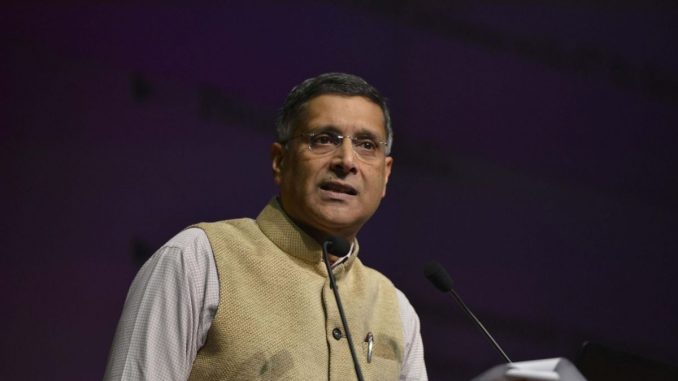
India economic survey 2018: The Economic Survey 2017-18, which was released in Parliament on Monday ahead of the Union Budget 2018 had key implications for agriculture sector which employs more than 50 per cent of the total workforce in India and contributes around 17-18 percent to the country’s GDP.
India economic survey 2018: The Economic Survey 2017-18, which was released in Parliament on Monday ahead of the Union Budget 2018, which is to be presented by Finance Minister Arun Jaitley on February 1, had key implications for agriculture sector, a space which employs more than 50 per cent of the total workforce in India and contributes around 17-18 percent to the country’s GDP. Taking note of the condition of farmers in India, Chief Economic Advisor Arvind Subramanian said ,”At present, Indian farmers are adapting farm mechanization at a faster rate in comparison to recent past. Although, the sale of tractors in India cannot be taken as the only measure of farm mechanization but to a great extent it reflects the level of mechanization.”
The Economic Survey says that the sale of tractors to a great extent reflects the level of mechanization. Indian tractor industries have emerged as the largest in the world and account for about one-third of total global tractor production, the Survey adds. While the trend is encouraging, the Economic Survey notes that more needs to be done. It is estimated that percentage of agricultural workers of total work force would drop to 25.7 per cent by 2050 from 58.2 per cent in 2001. “Thus, there is a need to enhance the level of farm mechanization in the country. Due to intensive involvement of labour in different farm operations, the cost of production of many crops is quite high,” Chief Economic Advisor Arvind Subramanian said.
The economic survey also noted that Agricultural R&D is the main source of innovation, which is needed to sustain agricultural productivity growth in the long-term. The Survey says that the actual expenditure of Department of Agricultural Research and Education/Indian Council of Agricultural Research has increased from Rs 5,393 crore in 2010-11 to Rs.6800 (BE) crore during 2017-18. The compound annual growth rate of expenditure has been 4.2% over the years and in recent years‘ expenditure has been on higher side.
Further, the economic survey says that with growing rural to urban migration by men, there is ‘feminisation of agriculture sector’, with increasing number of women in multiple roles as cultivators, entrepreneurs, and labourers. Globally, there is empirical evidence that women have a decisive role in ensuring food security and preserving local agro-biodiversity.
Further, the economic survey points out that many measures have been taken to ensure mainstreaming of women in agriculture sector, including earmarking at least 30% of the budget allocation for women beneficiaries in all ongoing schemes/programmes and development activities; initiating women centric activities to ensure benefits of various beneficiary-oriented programs/schemes reach them and focusing on women self-help group (SHG) to connect them to micro-credit through capacity building activities and to provide information and ensuring their representation in different decision-making bodies.
Since agriculture sector of the country is under stress currently, the government needs to ensure adequate reforms are introduced to revive the sector. “Agriculture sector needs the much needed attention and 52% population of the country are looking forward to reforms in this sector for the last 4 years. It would be unwise for the government to not look at this sector seriously as it is facing a crisis at the moment and can really make or break the government’s future in 2019 elections,” Chenthil R Iyer, Founder & Chief Strategist, Horus Financial Consultants Pvt. Ltd. told FE Online in an interview.
Traditionally, the Economic Survey was the government’s assessment of how the economy had fared in the last 12 months by summarising the economic and fiscal trends. Notably, the structure was changed by the government’s chief economic adviser, Arvind Subramanian, with the survey for 2014-15, wherein the document was divided into two parts. The first volume explored various themes of economic development. The second volume reflected on the state of the economy in the traditional format.
Source: Financial Express

Leave a Reply